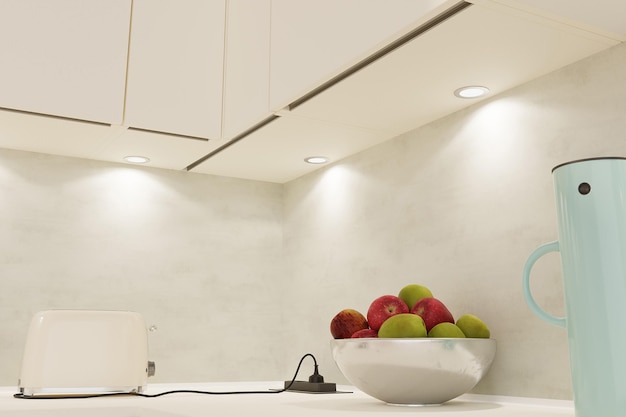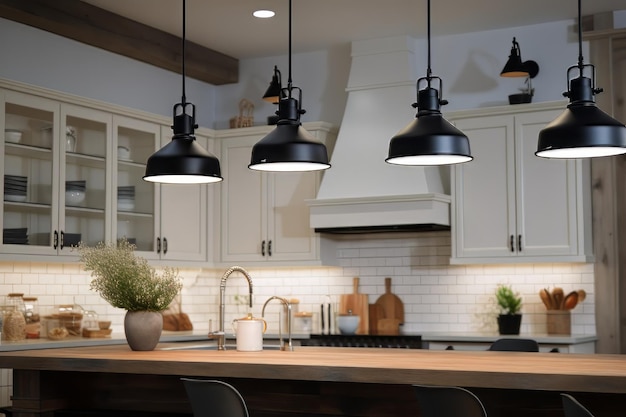Hi, I’m Sophie Bennett. When I renovated my kitchen last year, I didn’t realise how much lighting would impact the overall feel and functionality. Like most people, I focused on cabinets, benchtops, and appliances, but good lighting? That was almost an afterthought. That was a big mistake.
Fast-forward to today, and I’ve learned that the right kitchen lighting can transform your space—making it look great and improving your use. Whether you’re renovating or just giving your kitchen a little refresh, these kitchen lighting tips will help you create a warm, inviting, and practical space.
Why Kitchen Lighting Matters More Than You Think

The kitchen is the heart of the home. It’s where we cook, eat, and gather with friends and family. But a poorly lit kitchen can feel cold, cluttered, or frustrating. Here’s why good lighting matters:
- Functionality: Proper lighting makes cooking safer and easier.
- Ambience: The right lighting sets the mood, whether you’re making dinner or hosting a party.
- Style: Lighting isn’t just practical—it’s a design statement.
5 Essential Kitchen Lighting Tips
1. Layer Your Lighting
One light source is not enough in a kitchen. You need a mix of ambient, task, and accent lighting.
- Ambient Lighting: This is your main light sourLightsually from ceiling fixtures. Think of it as the base layer.
- Task Lighting: Focused on highlighting areas like benchtops, the stove, or the sink.
- Accent Lighting: Adds depth and highlights design features, like under-cabinet or pendant lights over an island.
I learned this the hard way. My old kitchen had one sad ceiling light that shadowed half the room. Now, I’ve got layered lighting, which makes a difference.
2. Choose the Right Bulbs
The type of bulb you choose affects both the light quality and the mood.
- Warm LigLight700K-3000K): This creates a cosy, inviting feel. Perfect for general kitchen lighting.
- Cool Light (3500K-5000K): Brighter and more energising. Great for task areas where you need to see clearly.
I prefer warm light in most areas and cool highlighter in cabinets for chopping and prep work. This keeps things practical without losing that cosy vibe.
3. Add Dimmer Switches
Trust me on this one: dimmer switches are a game-changer. They let you control the light intensity, perfect for setting the mood: bright light for cooking and softer light for dining.
- Tip: Install dimmers for your main lights and pendants. It’s a small upgrade with a big impact.
4. Don’t Forget Under-Cabinet Lighting
Under-cabinet lighting is one of a kitchen’s most overlooked but useful features. It illuminates your workspace and eliminates shadows. Plus, it looks stunning at night.
- Types to Consider:
- LED strips: Easy to install and energy-efficient.
Puck lights: Great for focused, circular highlights. Use Pendant Lights for Style and Function
Pendant lights aren’t just decorative—they’re practical, too. Hang them over your island or dining area to add both light personalities.
- Spacing Tip: For an island, hang pendants about 75-90cm apart and 70-90cm above the surface.
I chose glass pendants for my kitchen because they give off a soft glow and don’t block the view.
Common Kitchen Lighting Mistakes (and How to Avoid Them)
Mistake 1: Relying Only on Ceiling Lights
One overhead light isn’t enough. Use layered lighting to avoid dark spots.
Mistake 2: Ignoring Colour Temperature
Mixing warm and cool lights can clash. Stick to one temperature per area.
Mistake 3: Poor Placement
Place task lighting where you need it most—like above benchtops and the sink.
My Personal Experience: How Lighting Changed My Kitchen
When I first designed my kitchen, I thought the lighting was just about “bright enough to see.” Big mistake. After a few months of dull, shadowy dinners and struggling to see while chopping veggies, I decided to redo the lighting.
I added LED strips under the cabinets, installed dimmer switches, and chose warm, inviting pendant lights. The change was incredible. My kitchen feels welcoming and functional—perfect for everything from busy weekday breakfasts to relaxing dinner parties.
Lighting Tips for Different Kitchen Zones
1. Cooking Zone:
- Bright, cool task lighting is a must here. Consider adjustable spotlights or under-cabinet LEDs.
2. Dining Area:
- Warm, soft lighting creates a relaxed atmosphere. Dimmer-controlled pendants work wonders.
3. Island or Breakfast Bar:
- Use stylish pendant lights for a mix of function and design.
Final Thoughts: Light Up Your Kitchen, Your Way

Kitchen lighting isn’t just a design detail—it’s a key part of how your kitchen looks and works. With the right mix of layers, bulbs, and placement, you can create a beautiful and practical space.
What’s your biggest kitchen lighting challenge? I’d love to hear your tips and stories. Share them in the comments below! And if you found these kitchen lighting tips helpful, feel free to pass them on to someone who might need a little brightening!


